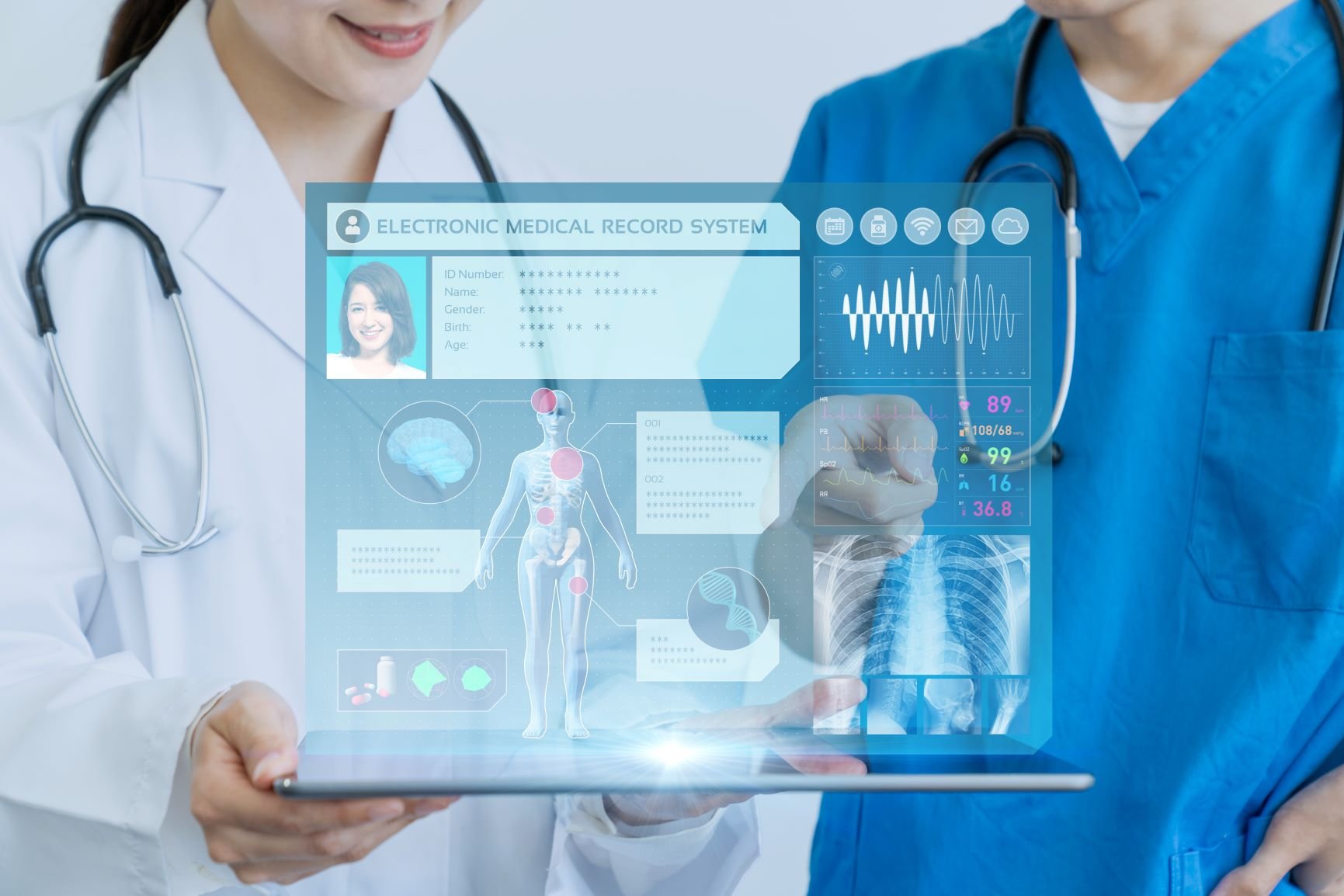Interoperability in Healthcare Benefits - For Doctors and Patient Care
by Rotageek on 5 October 2020

Digitising the healthcare system has been a continuously evolving issue. Connecting fragmented information and accurate data sharing among multiple care providers is an ongoing challenge, held back by decades old health record systems.
In today’s modern world, patients expect their data and medical history to be readily available. Yet too often, health organisations are unable to share patient information. In fact, over a quarter of healthcare organisations report having no means in place to receive access to patient records electronically.
To catch up with advanced technology and provide a solution, there is an urgent need for interoperability in healthcare. While the journey is not a simple task, it is one that has been supported globally by tech giants including Google, IBM, Microsoft and Amazon.
The benefits of interoperability in healthcare
For health information systems to evolve and cope with the increasing demands on our National Health Service (NHS), there needs to be an ability to exchange, process and understand patient data in real time. The end goal of an interoperable solution is to improve quality of care but also to improve doctor wellbeing, reduce healthcare costs and implement a safe, GDPR-friendly method of accessing clinical information.
While implementing structural interoperability across healthcare remains an unquestionable challenge, there are clear financial and public health benefits.
Healthcare interoperability can save patients’ lives
An estimated 237 million medical errors occur in the UK yearly, with almost 84% being due to incorrect medication. Whilst researchers claim three out of four occurrences won’t result in harmful effects, this troubling report costs the nation thousands of lives and almost £100 million every year.
Interoperability standards are of vital importance for increasing patient safety. Enabling doctors and healthcare staff to access live data allows for patients to be treated at any point within the healthcare system, opening up opportunities for multi-provider analysis and faster treatment decision making. An additional benefit is a clearer, better understanding of medical knowledge with the standardisation of terms across one integrated system.
It is crucial that both hospitals and external systems demonstrate excellent interoperability to communicate patient history and medical records, as well as pinpoint incomplete data. Integrated health information technology that succeeds in such data sharing dramatically reduces the risk of missing critical, possibly lifesaving, information.

Improved quality of care and patient experience
Whilst patient safety is a main concern, interoperability in healthcare also has a beneficial effect on the overall quality of care. Patients are often required to complete administrative tasks, repeat symptoms and go through the same process multiple times for just one condition. This not only affects the patient experience but costs the healthcare system substantial time and money in resources.
By streamlining the health information exchange process, organisations can provide a faster and more coordinated treatment whilst delivering personable, more reassuring based care. Patient wait times can be measured and reduced with real-time data, simultaneously benefiting the individual’s experience but also healthcare workers’ productivity and scheduling.
Financial stability for our NHS staff is prominent
We are well aware that our healthcare system is often caught short of staff, resulting in an overworked industry. However what doesn’t make the headlines is that our temporary and part-time NHS staff must regularly wait up to 60 days to be paid for overtime and the shifts that they are required to drop everything for during a worldwide pandemic.
Interoperability in payment systems gives workers more control over their finances, creating a healthier relationship between them and their place of work. Amid the Covid-19 crisis, Locum’s Nest workforce solution partnered with Earnd to enable healthcare organisations to pay staff directly after their locum shift. This interoperable service has bridged a technological gap in the NHS, reducing just one pressure on healthcare workers.
“The NHS is the cornerstone of British society and now more than ever we need to stand together to support our NHS. On-demand pay makes booking additional shifts more attractive, thus reducing the need to use agencies. By offering Earnd for free to the NHS we make it easier than ever for Trusts to reduce their agency costs, whilst supporting their staff’s financial wellbeing.” - Josh Vernon, Earnd CEO
Whilst free for employee use, Earnd have also waived charges to NHS employers indefinitely, helping to ease financial concerns and a lack of resources. The app is currently in use across seven NHS Trusts, alleviating a major financial worry for over 30,000 doctors and contributing to the efforts towards reducing medical brain drain and increasing retention rates.

Real-time data sharing results in a more efficient health workforce
The implementation of an interoperable system erases the need for paper records and archaic technology that has slowed down the healthcare system for decades. Real-time data results in clearer, faster access to patient records and a consistent manner of working that amounts to increased productivity.
The healthcare industry’s capacity will no doubt grow and develop over the coming years in keeping with improved data readiness. With additional medical advancements in technology, interoperability further enables healthcare providers to establish the correct source of treatment and make faster decisions. Repetitive tasks such as testing, symptom checking and administration will be eradicated, resulting in a seamless exchange of healthcare information.
This consequently has a positive effect on the reduction of doctor burnout, resulting in better care for our doctors and a more efficient workflow.
Interoperable staff scheduling has multiple benefits
An interoperable system that is guaranteed to deliver measurable results is optimised staff scheduling. The NHS states technological solutions should be used in rostering to enforce breaks, overcome shift swapping issues and reduce doctor fatigue.
One automatic system that is currently used by NHS partners is Rotageek. The workforce management software uses hundreds of data points to produce optimised, accurate schedules for staff across various locations. Staff are able to input their preferences directly onto the platform which also takes into account historical data and recent trends whilst forecasting labour demand.
Interoperability in healthcare scheduling systems not only eliminates the need for increased administrative time spent on rotas but also reduces unnecessary labour costs and the volume of overworked NHS staff.

Secure data sharing during a pandemic
Patient privacy has always been a major concern, particular for healthcare organisations where electronic health records (EHR) are held within systems that lack intercommunication. When workers are unsure of the location of patient data, this can result in lost paper trails and a violation of secure information sharing.
With the adoption of interoperability comes a protection of privacy for patients but also for doctors’ risk against data breaches. Records are consistently stored in the same location for multiple organisations whilst administrators can track each users’ actions, access and security.
Interoperable systems are not only an answer for patient security, but also for the collection of accurate data that can help health organisations to share medical knowledge. By storing collective public health data, integrated technology can provide doctors with the information they need to predict and prevent outbreaks.
A system as such has been used during the coronavirus pandemic to assess individuals requiring support from local health organisations who are suffering symptoms. Using a curated algorithm, the NHS 111 service is able to decide the right pathway for the patient before alerting and passing on medical data to the appropriate service.
The consolidated data collected throughout the pandemic has also granted the NHS enhanced visibility into the status of the response including hospital occupancy levels, department capacities and length of Covid-19 patient stays. These metrics have been measured across the nation down to individual organisations, allowing decision-makers to understand how the virus is spreading and prepare for future strains on the healthcare service.
Learn more about how Rotageek's healthcare scheduling technology is improving doctor's lives and patient care.
- Quick links
- Log In
- Book a Demo
- Help Centre
- Products
- Digital Scheduling
- Autoscheduling
- Forecasting
- Company
- Our Story
- Careers
- Blog
- Privacy Policy